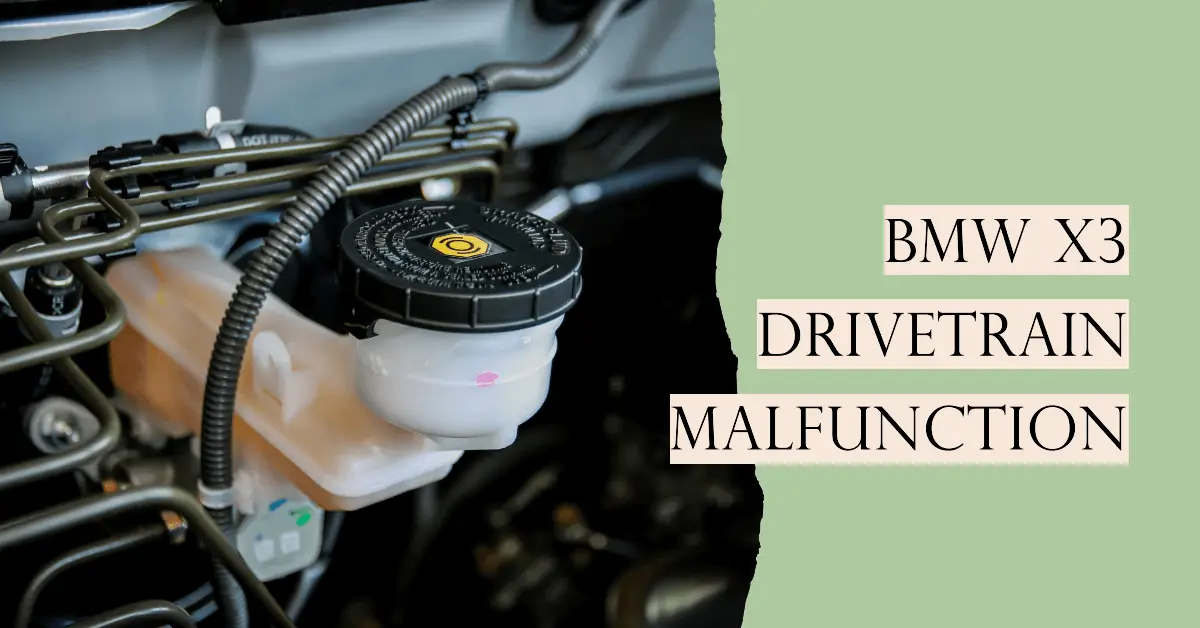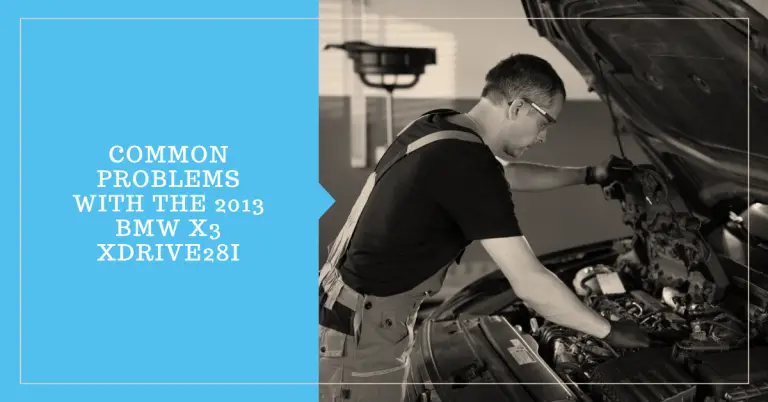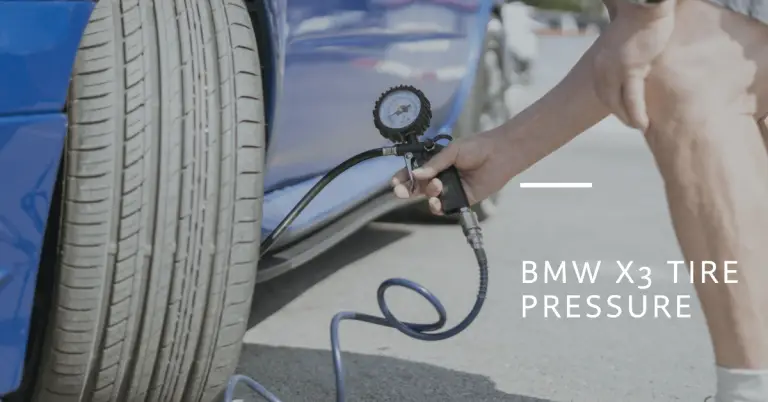BMW X3 Drivetrain Malfunction: Causes and Solutions
The BMW X3 is one of the most popular compact luxury SUVs on the market today. These capable crossovers combine car-like handling and comfort with the utility of an SUV. However, like any vehicle, the X3 can suffer from mechanical issues over time. One of the most concerning warnings drivers may encounter is the dreaded “drivetrain malfunction” alert on the dashboard.
So what exactly causes a BMW X3 drivetrain malfunction, and what can you do about it?
In most cases, a drivetrain malfunction indicates a fault in one of the components responsible for delivering power to the wheels. By diagnosing the issue promptly and making the right repairs, drivers can often get their X3 back on the road..
In this detailed guide, we’ll cover:
- What makes up the BMW X3 drivetrain system
- Common causes of BMW X3 drivetrain failures
- How to diagnose the source of the problem
- Recommended repair and maintenance tips
- Steps to prevent future drivetrain issues
Equipped with this knowledge, X3 owners can better understand why drivetrain malfunctions happen and what to do when that dreaded warning light pops up on the dash. Let’s get started!
What is the BMW X3 Drivetrain?
The drivetrain refers to all the components that transfer power from the engine to the wheels. The key elements of the BMW X3 drivetrain include:
- Engine – The turbocharged gas or diesel engine that produces power. Common X3 engines include the B46, B48, B58, N20, N55, and N57 motors.
- Transmission – Transfers engine torque to the wheels via gear reductions. The X3 uses either a ZF 8-speed automatic or Getrag 6-speed manual transmission.
- Driveshaft – The rotating shaft that connects the transmission to the rear differential on AWD models. Transfers power to the rear wheels.
- Transfer Case – Splits torque between the front and rear differentials on AWD models. Engages all-wheel drive.
- Differentials – Allow the wheels to spin at different speeds while turning. Front and rear differentials on AWD models.
- Axle Shafts – Transfer torque from the differentials to the front and rear wheels via CV joints.
- CV Joints – Constant velocity joints connect axle shafts to the wheels and compensate for suspension movement.
Now that we’ve identified the key components, let’s look at what can go wrong with the X3 drivetrain and cause that dreaded warning light.
Common BMW X3 Drivetrain Malfunction Causes
There are a variety of issues that can trigger a “drivetrain malfunction” message in your BMW X3:
Engine Problems
As the heart of the drivetrain system, the engine needs to be running properly to deliver smooth, reliable power. Some common engine issues include:
- Faulty Sensors – Malfunctioning oxygen or knock sensors will cause poor performance, bad fuel economy, and error codes.
- Failed Ignition Coils – Faulty ignition coil packs misfire spark plugs, resulting in rough running.
- Damaged Fuel Injectors – Leaky or clogged fuel injectors affect engine efficiency and power output.
- Low Engine Compression – Compression issues from worn piston rings or leaking head gaskets reduce engine power.
Transmission Problems
The transmission is another vital drivetrain component. Watch for:
- Low Fluid Level – Insufficient transmission fluid can lead to internal damage and slippage.
- Leaky Seals & Gaskets – Transmission fluid leaks indicate worn seals that need replacement.
- Faulty Solenoids – Electrical issues with shift solenoids cause abrupt gear changes.
- Gear Damage – Worn or broken gears inside the transmission will fail to engage properly.
Driveshaft & Axle Issues
As the connection between the transmission and wheels, the driveshaft and axles endure high stresses:
- Worn CV Joints – Constant velocity joints become loose or start clicking when turning.
- Damaged Driveshaft – Dented or cracked driveshafts vibrate severely at higher speeds.
- Transfer Case – The transfer case malfunctions on AWD models, causing drivetrain binding.
- Bad Wheel Bearings – Wheel bearings allow excess drivetrain play when worn out.
Electrical Faults
Electrical gremlins in the X3’s wiring or control modules can also trigger drivetrain issues:
- Speed Sensors – Faulty wheel speed sensors cause traction, stability and shifter problems.
- Wiring Harness – Frayed or damaged wires leading to drivetrain components interrupt signals.
- Control Module – A failed transmission or ABS module won’t communicate properly with drivetrain sensors.
As you can see, there are many potential culprits that could be at the root of your BMW X3 drivetrain malfunction. Next, let’s go over ways to diagnose the problem.
How to Diagnose BMW X3 Drivetrain Problems?
When your X3’s drivetrain malfunction light turns on, don’t panic. By methodically diagnosing the issue, you can zero in on the faulty component. Here are some troubleshooting steps:
Check Fluid Levels
Inspect fluids that commonly impact drivetrain operation:
- Engine Oil – Low oil levels can cause drivetrain damage from inadequate lubrication.
- Transmission Fluid – Insufficient fluid indicates potential internal transmission issues.
- Coolant – Low coolant allows engines to overheat, potentially damaging drivetrain components.
- Brake Fluid – Low fluid reduces braking ability, which strains the drivetrain.
- Power Steering Fluid – Low fluid makes steering difficult, putting extra load on the drivetrain.
Top up any low fluids to proper levels to rule out drivetrain problems from fluid loss.
Scan for Trouble Codes
Connect an OBD-II scanner and pull diagnostic trouble codes (DTCs). Error codes provide clues to malfunctioning drivetrain components like:
- P0015 – Camshaft Position Timing
- P0700 – Transmission Control System
- P0720 – Output Speed Sensor
- P2706 – Transfer Case Neutral Indicator Input
Research codes to identify parts likely causing the drivetrain malfunction.
Listen for Unusual Noises
Test drive the X3 and listen closely for any abnormal sounds coming from the engine, transmission or axles while accelerating:
- Knocking or rattling from the engine often indicates problems with sensors, ignition coils or compression.
- Grinding or whining from the transmission points to low fluid, gear damage or faulty solenoids.
- Clicking, snapping or vibrations from the axles are signs of bad CV joints, driveshaft damage or worn wheel bearings.
Try to replicate the conditions present when the warning light first came on to produce the noise again.
Armed with this information, you should have a better understanding of what’s causing the BMW X3 drivetrain malfunction. Next, let’s review how to fix some common issues.
How to Repair BMW X3 Drivetrain Problems?
Repairing drivetrain problems requires diagnosing the root cause, then replacing the faulty component. Here are some typical repairs:
Engine Repairs
- Replace Ignition Coils – Faulty ignition coil packs need to be replaced to restore proper sparking in the cylinders.
- Swap Fuel Injectors – Clean or replace dirty, leaky fuel injectors causing power loss or misfires.
- Install New Sensors – Faulty temp, knock, oxygen and speed sensors need to be changed to restore engine performance.
Transmission Repairs
- Flush Transmission – Drain old fluid and refill with fresh, approved BMW transmission fluid to clean and protect internal components.
- Replace Seals & Gaskets – Worn transmission seals and gaskets must be renewed to stop fluid leaks.
- Repair Solenoids – Clean or replace any malfunctioning electrical shift solenoids in the valve body causing rough shifts.
- Inspect Gears – Have a shop inspect the transmission internals for any damaged or worn gears that may need replacement.
Driveshaft & Axle Repairs
- Replace CV Joints – Clicking CV joints must be renewed to stop vibrations and potential snapping while turning.
- Swap Driveshaft – Dented or cracked driveshafts should be replaced before catastrophic failure occurs at high speeds.
- Service Wheel Bearings – Worn, loose wheel bearings enable excess drivetrain play and must be repacked or replaced.
For major repairs like replacing a faulty transmission or differential, it’s recommended to have your BMW serviced by a professional mechanic. They have the tools, equipment and training needed for reliable drivetrain repairs.
Preventing BMW X3 Drivetrain Breakdowns
While drivetrain problems can never be avoided entirely, you can take proactive maintenance steps to minimize issues:
Follow Fluid Service Intervals
- Change engine oil every 7,500-10,000 miles with approved BMW synthetic oil.
- Replace transmission fluid every 50,000-100,000 miles.
- Flush and refill coolant every 3-5 years or 50,000 miles.
- Bleed and refresh brake fluid every 2 years.
- Inspect power steering fluid level regularly and top up when low.
Perform Regular Inspections
- Check for torn CV boots and inspect axle shaft seals during oil changes.
- Look for evidence of leaking fluids under the X3 that could indicate drivetrain issues.
- Monitor for vibrations from the driveshaft or clunks when shifting.
Drive Gently
- Allow the engine to warm up before hard acceleration.
- Shift smoothly and avoid revving excessively high.
- Brake gradually and avoid aggressive downshifting.
- Slow down over bumps and curbs to prevent damage to underbody components.
By staying on top of maintenance and driving with care, you can add years of reliable service from your BMW X3’s drivetrain.
Conclusion
A “drivetrain malfunction” warning on a BMW X3 is a worrisome sign for drivers. However, understanding what components make up the drivetrain and the typical causes of failures empowers owners to get to the bottom of the problem.
Catching issues early and making repairs promptly is key to avoiding permanent damage or breakdowns. For major repairs, the Experts at Your Mechanic have the skills, tools and affordable pricing to accurately diagnose your X3 and make drivetrain repairs to get you back on the road.
So don’t panic if your X3 shows a drivetrain malfunction. With this guide’s advice and a professional mechanic on your side, you can troubleshoot the issue and stop worrying about the health of your SUV’s drivetrain for the long haul.







